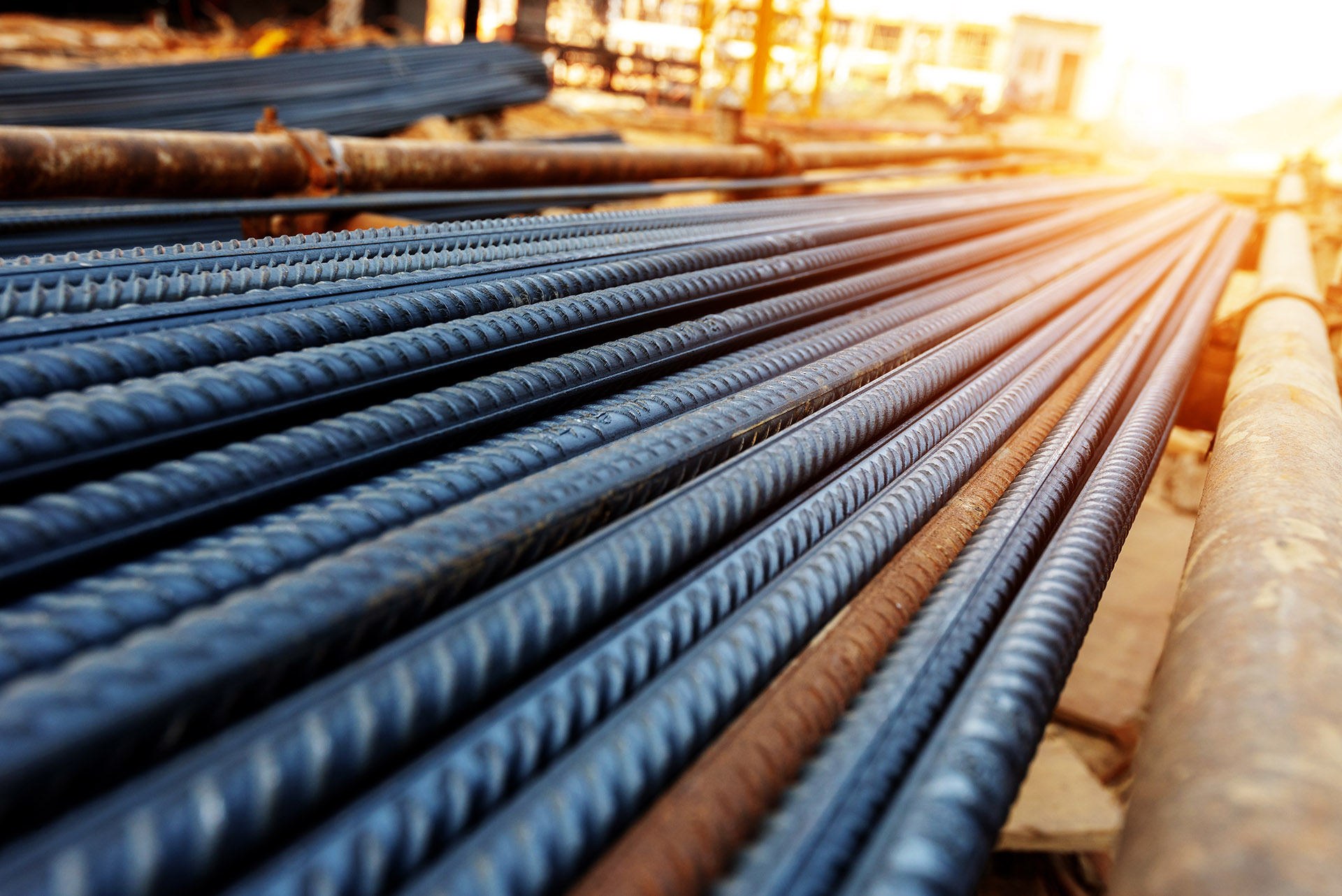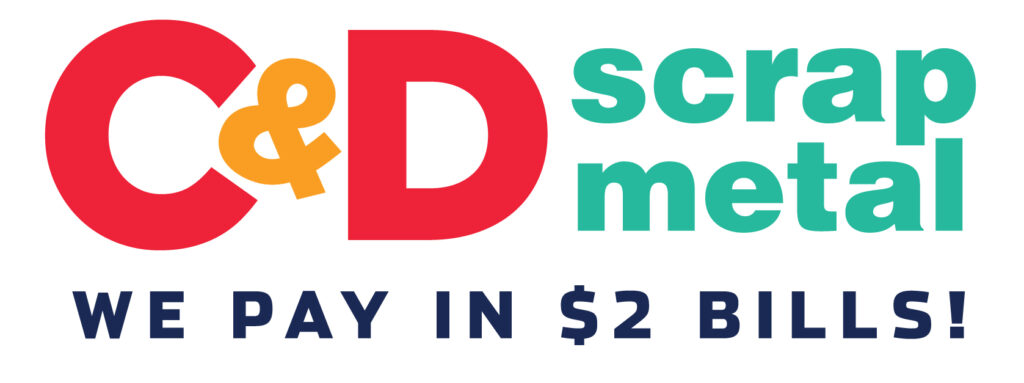Scrap Smarts: Your Guide to Ferrous and Non-Ferrous Metal Recycling

Welcome to your ultimate cheat sheet for scrap metal recycling! With the demand for metals skyrocketing in various industries, getting the hang of recycling both ferrous and non-ferrous metals is good for the environment and your wallet.
C&D Scrap Metal here to help you sort out the difference between ferrous and non-ferrous metals and give you some great tips on how to recycle them for maximum value. Whether you’re a seasoned recycler or just getting started, this guide will help you up your recycling game. Let’s dive in!
Ferrous vs. Non-Ferrous Explained
The world of metals is split into two main camps—ferrous and non-ferrous. C&D Scrap Metal takes both kinds but we process them differently and they are repurposed for different things.

Ferrous Metals: The Heavy Hitters
Ferrous metals are like the weightlifters of the metal world. They contain iron, making them magnetic and prone to rust. These metals are strong, durable, and ready to tackle heavy-duty jobs.
Common Examples:
- Steel: Commonly used in construction, automotive, and manufacturing industries. Think skyscrapers, cars, and machinery.
- Cast Iron: Found in sturdy pipes, robust automotive parts, and your grandma’s favorite cookware.

Non-Ferrous Metals: The Lightweights Still Pack a Punch
On the flip side, non-ferrous metals are the nimble athletes. They don’t contain iron, so they’re non-magnetic and more resistant to corrosion. These metals are often lighter and have excellent conductivity properties.
Common Examples:
- Aluminum: Your go-to for beverage cans, foil, and aircraft parts.
- Copper: The top choice in electrical wiring and plumbing.
- Brass: Found in musical instruments and decorative items.
- Zinc: The protector, often used in coatings to prevent rust.
So, now you know the basics. Ferrous metals are your heavy-duty, iron-containing workhorses, while non-ferrous metals are the versatile, iron-free champs. Ready to become a metal-recycling pro? Read on!
Before You Bring Us Your Metal
There are a couple of easy things you can do to get your scrap ready for C&D. Sorting your ferrous and There are a couple of easy things you can do to get your scrap ready for C&D. Sorting your ferrous and non-ferrous metals out before drop-off can streamline the process. Think of it as helping your metals get a running start in the recycling process. While not a must-do, think about the following:
Preparation for Recycling: Take a few moments to clean your metals. Removing dirt, grease, and other contaminants can make them easier to process. It’s a simple step that can make a big difference!
Down the recycling pipeline, Ferrous metals go through a process of shredding and melting in large furnaces. Then they’re reformed into useful new products like beams, rebar, and automotive parts—giving them a new lease on life in construction and vehicle manufacturing.
Non-ferrous metals follow a slightly different path. They’re sorted and cleaned to get rid of impurities, then melted down and cast into new shapes. These metals find their way into a variety of applications, including electronics, aviation, and plumbing—helping to build everything from gadgets to aircraft.
How Scrap Metal Prices Are Set
Ever wondered what goes into setting those scrap metal prices? There are a number of factors that set the price. Here’s a breakdown.
- Type and Quality: Think of this as the VIP pass for your metal. The cleaner and purer your scrap, the more exclusive (and valuable) it becomes.
- Market Conditions: Scrap metal prices swing with supply and demand. If the market’s hot and the metal’s in high demand, expect to see your payout ramp up too.
- Quantity: Big haul? Big reward! Generally, the more scrap you bring in, the better the rate.
- Processing Costs: Sorting, cleaning, and transporting your scrap all add up. So, while you’re getting paid, those costs are part of the deal.
The Big Pay Off Of Recycling Ferrous and Non-Ferrous Metals
When we say scrap metal recycling is a win-win, we really mean it. There are a number of ways scrapping pays off:
- Earth-Friendly Benefits: Recycling ferrous and non-ferrous metals plays a big role in protecting our planet. By recycling, we cut down on the need for mining and extracting new raw materials, which means significant energy savings and reduced carbon emissions. It’s like giving the planet a much-needed breather.
- Economic Upsides: Turning scrap into new products isn’t just good for the Earth; it’s great for the economy, too. Manufacturers save money by using recycled materials instead of raw ones. Plus, the recycling industry creates jobs and spurs economic growth.
- Sustainability Score: Recycling helps extend the life of metal resources and supports a circular economy. Instead of using materials only once, we keep them in the loop by continuously reusing and recycling. It’s all about creating a sustainable future where resources are valued and conserved.
Ready to Scrap? Let C&D Make It Easy!
When it comes to selling your scrap metal, we’ve got you covered! At C&D Scrap Metal, we make the process simple, convenient, and stress-free.
Why Choose C&D?
- Four Convenient Locations: No matter where you are, there’s a C&D nearby to handle your scrap.
- Friendly Staff: Our team is here to help, answer your questions, and walk you through the process.
- Simple Drop-Off: Drop off your scrap metal with ease—no complicated procedures, just straightforward service.
- Quick & Easy to Understand Pay-Out: Get paid fast and on the spot—no waiting around. When you visit our centers, we weigh your scrap metal right in front of you.
Ready to cash in on your ferrous and non-ferrous? Visit us today and experience hassle-free recycling with a smile. Contact us now or drop by one of our locations to get started!
